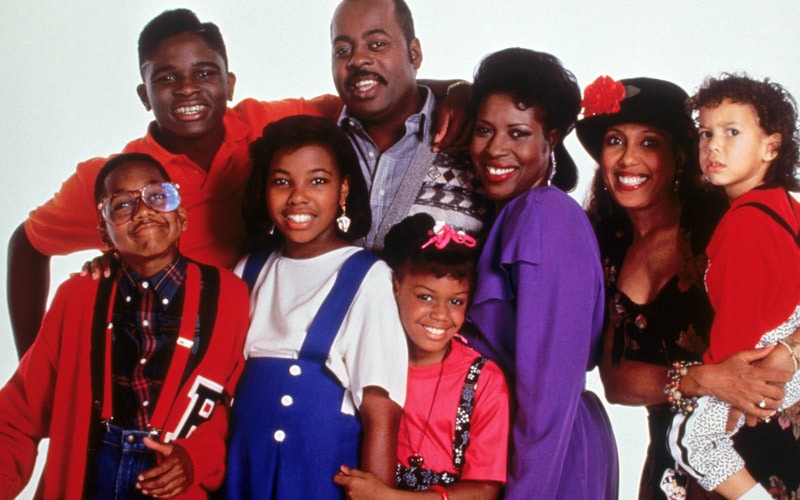
For entertainment and escape from the real world, many people tune in to TV series. This might be a way to find temporary shelter in a fictional universe. Viewers may also engage in this activity to meet their social and self-development needs. This activity may be harmful to your health. It seems to be a highly effective coping strategy. This article will discuss why TV series can be so helpful.
Adaptive engagement in watching TV series was positively predicted by coping/escapism, enrichment and emotional enhancement motivations for watching TV series
This study has important implications for our understanding of binge-watching and other addictive behaviors. We can't dismiss the fact that such behaviors may be helpful coping mechanisms in people who are experiencing distress. But, we can see that binge watching could be a useful protective strategy. It has been shown that a person's coping/escapism, enrichment and emotional enhancement motivations for watching TV series predict adaptive engagement in watching TV series.

Among other factors that may influence adaptive engagement in viewing TV series, researchers found that viewers' coping/escapism, enriching and emotional enhancement motivations were positively associated with their participation in TV series. Moreover, the effects of the tyranny of film analysis were more significant than the effects of high-level cognitive processes.
Anxiety was positively associated with loss in control over TV series.
Participants who experienced anxiety symptoms as a result of the COVID-19 Pandemic were more likely watch non-problematic TV programs. These behaviors were related to coping strategies and escapism motivation. Interestingly, this same pattern was also associated with increased time spent watching TV series during the COVID-19 pandemic. These findings were however limited because it was not possible to clearly distinguish between problem and non-problematic patterns in TV series watching.
Even though not all causes are directly related to television series, there are several things that can increase your anxiety. First, it is important to remember that television viewing can have a positive impact on anxiety levels. While watching television is not stressful in itself, watching it in excess can make us feel more anxious than before. Watching reality shows can also contribute to anxiety.

Anxiety was negatively associated with emotional motivation for watching TV shows.
The Diagnostic and Statistical Manual of Mental Disorders (DSM) is a handbook that can be used to diagnose mental disorders. The handbook lists symptoms and diagnoses for each disorder, and assures consistency in language. The original 1952 publication of the manual was followed by a 2013 revision based on new research. This manual includes information about anxiety disorders. These are some important things to consider when diagnosing an individual for anxiety.
FAQ
Are tv commercials targeted?
It is important to understand what people are doing at the moment you're viewing an advertisement.
This means that if you want your message to reach people who watch football on Sunday afternoons then advertise during football games. You can reach people who watch movies on Friday night by advertising during movie times.
You should advertise on prime-time shows if you want people to see your ads while they are eating dinner.
Knowing what people do to your ads is key. That means having access to data about what programs they're watching.
New technologies like streaming video or DVRs make data easier to access.
Remember that everyone is unique and has different preferences. It's impossible, therefore, to predict which program someone will view next.
This is why it's so important to test different types ads. Real-world feedback is the best way to find out which types of ads work well.
What are the main styles of commercials available?
Three types of commercials are available: TV Commercials; Radio Commercials; and Print Ads.
TV commercials usually last for 30 seconds. They are used often to promote brand awareness.
Radio commercials can be longer than 1 minute and are used for product marketing.
Print ads are usually less than two minutes long and are often targeted at specific audiences.
Does TV affect sales?
TV can influence sales because it lets consumers see the available products.
Before buying something, consumers often compare prices. They often think "I wonder if it's possible to afford that?" when they see an advertisement for a product.
TV for business:
Yes, television is good for businesses. It helps businesses reach more customers.
Placards can be put up in the streets when you are trying to sell your home. Advertising in local papers such as the newspaper and real estate section or the classifieds is also a good idea.
Online advertising is possible through social media sites such as Facebook and other websites.
With TV, you don’t need to worry about writing articles or putting up signs.
Instead, relax and allow someone else to do all the work.
That way, you get the best results possible without having to pay for expensive marketing campaigns.
How long does a commercial flight take?
Commercials are shown at different times throughout the day. Some commercials run during the day while others air in the evening.
Most commercials air every hour or half hour.
Do advertisers spend a lot of money on TV?
Advertisers spend a lot of money promoting their products on TV. Advertisers also spend a lot to persuade consumers to purchase their products.
This is done by investing money in research to discover what people love and don't like about their products.
These data are then used to design ads that appeal and attract consumers by advertisers.
How are TV Ads delivered?
The most common way television ads reach audiences is via cable, satellite, IPTV, over-the-air broadcast, DVRs, VODs, mobile devices, etc.
There are many different ways to deliver content to consumers today. There isn't enough variety in the distribution methods companies use to advertise their products.
This is because they all use the same metrics to decide which delivery method they will use.
For example, if your ad effectiveness is measured by viewing time, you'll want to make sure that the advertisement is accessible on as many channels as possible.
If your objective is to measure the effectiveness of ads based on impressions then you need to ensure that your ads are reaching as many eyes as possible.
The problem is that the two methods do not always match up.
For example, if an advertisement is delivered on multiple platforms but only one platform provides high-quality video then it could result in less views.
You could miss out on great opportunities if all you do is rely on time to measure success.
Statistics
- With OTT ad revenue set to increase from 45% to 60% over the next decade, AdTech pioneers and early adopters of OTT advertising will reap its benefits in the near future. (clearcode.cc)
- 93 percent of American adults listen to the radio over the course of the week. (marketingevolution.com)
- Television is a great brand awareness tool - Almost every American has a television, with 83 percent of adults having two or more, and American households keep their televisions on for 8.1 hours each day on average. (marketingevolution.com)
- In fact, 76% of people completely skip the commercials while watching their programs. (qualitylogoproducts.com)
- To get estimated costs for airing a 60-second TV commercial in different regional markets, check out the following figures in this TV ad pricing chart from the media experts at Casual Precision. (fitsmallbusiness.com)
External Links
How To
How do I choose which type of advertisement to run on television?
There are many things to take into consideration when choosing between traditional print ads, digital billboards and radio spots.
First, choose whether you want short-term or long-term results.
The ad must generate immediate sales and short-term exposure. This means that the advertisement must immediately inform people about your product or service.
You want to increase awareness for a longer time. This could mean weeks or months.
Next, choose between ongoing or one-off campaigns.
A one-off campaign is used to promote a single event such as a new product release or holiday sale. These campaigns can be very costly because they require lots of planning and preparation.
Ongoing campaigns are cheaper but less effective. They allow you to run the exact same ad every week, or month.
Finally, decide how much you will spend.
Either you can invest in large amounts or small amounts. Small amounts of advertising will cost more per impression than larger amounts.
However, if the advertising isn't as extensive, you might not be able reach as many potential customers.